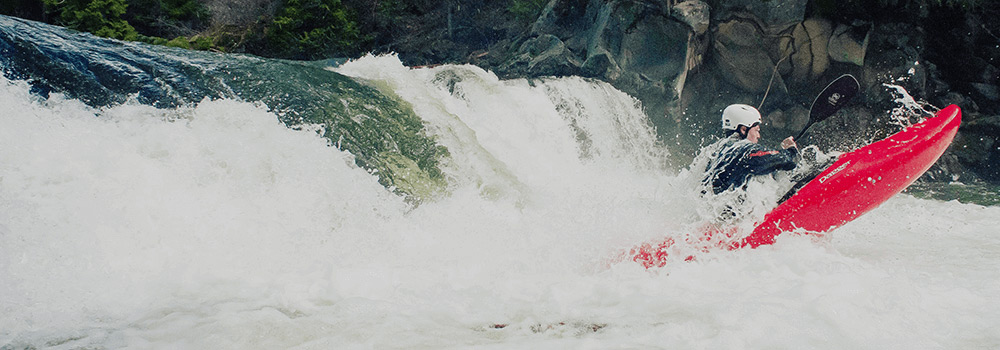Catching Eddies
Catching eddies makes you a better paddler. If you want to refine your skills, challenge
yourself to catch as many eddies as possible the next time you paddle one of your favorite
rapids. Catching eddies is where all your strokes come together, forward, turning, and draw
strokes with purpose of navigating downriver with skill. The ability to catch eddies skillfully
allows you to slow rapids down and navigate complicated rapids by traversing the river from
side to side. The ability to catch a difficult eddy is far more a sign of skill than simply getting from
the top to the bottom.
It is important to accelerate in and out of eddies in order to gain momentum and
overcome the boundary between up and downstream currents. Engaging your edges and boat
lean are key to getting the awesome feeling of whipping into an eddy with a strong eddy fence,
the boundary between up and downstream currents. Make sure you edge and lean in the
direction of your turn. Try to enter and exit eddies at the point where there is a clear distinction
between up and downstream currents. Line up the bow of your boat with this feature and
paddle. Most importantly, have a blast because this is surely one of the most fun parts of
paddling whitewater.
Key Points:
● The faster the water moves, the more edge is required.
● Important to have momentum, speed, coming into the eddy.
● Edge your boat toward the direction that your are turning.
● Try and enter and exit the eddy at the most defined point between up and
downstream currents.
● Line up the nose of your boat, just behind the rock or water feature you want to
go toward.
● Identify where the line between currents is most crisp.
Boofing
In the words of Dagger team ambassador, Bobby Miller, “oh yesh!” Catching eddies is
rad, but boofing is out of this world, sometimes literally! Launching a great boof provides a
feeling that just might be the pinnacle of an awesome day on the water.
The whole point of a boof is to clear obstacles and maintain speed. Often times paddlers
are boofing over holes or other features that might slow them down, or stop them all together. In
order to perform a boof, the paddler wants to utilize leverage from a deflection either a rock or
feature in the water. In order to utilize this leverage the paddler needs to edge their boat away
from the deflection, and take a good, well-timed stroke to counter the deflection allowing them to
use the deflection as a kind of ramp. While edging away from the deflection, the paddler should
crunch their knees toward their chest and lean back slightly in order to help bring the bow of the
boat up and create a little extra lift. If you do these things correctly, a “schweet” feeling awaits.
Key Points:
● Key point: stroke timing
● Why: to clear drops and to maintain speed
● Utilize leverage from a deflection, either rocks or water
● Edge your boat away from the deflection
● Take a good, well timed stroke to counter the deflection
● Think about your edge position when you are landing, what is your next move,
and how does the boof transition?

